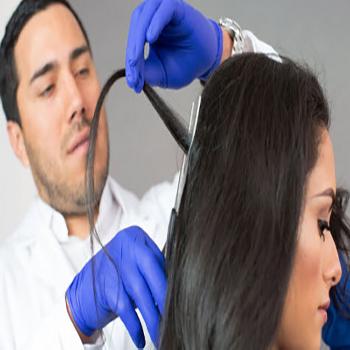The ETG Hair Drug Test analyzes hair samples to detect the presence of ethyl glucuronide, which is deposited in hair as it grows through exposure to blood, sweat, and skin oils. Key features of this test include:
Detection Window: EtG becomes detectable in head hair approximately 7 days after heavy alcohol use and can remain detectable for up to 90 days if the hair sample is at least 1.5 inches in length. A confirmed positive result indicates heavy alcohol use during this timeframe. Note that body hair does not grow at the same rate as head hair, leading to a less precise detection window.
Limitations: Results from this test cannot be correlated to an individual's blood alcohol concentration at a specific time in the past. Additionally, infrequent alcohol use may not be detectable using this test.
Substance Tested: This test specifically identifies heavy use of:
- Ethyl Alcohol (as indicated by the metabolite Ethyl Glucuronide)
The ETG Hair Drug Test is ideal for employers, rehabilitation centers, and organizations looking to monitor alcohol use, ensuring compliance and promoting a safe workplace.
Why would I need this test?
The ETG Hair Drug Test is specifically used to detect the use of alcohol over an extended period, typically up to 90 days. ETG (Ethyl Glucuronide) is a direct metabolite of alcohol, and its presence in hair indicates alcohol consumption. This test is commonly used for:
Court-ordered or legal testing, such as probation, child custody cases, or DUI programs where abstinence is required.
Rehabilitation or treatment programs to monitor long-term abstinence from alcohol.
Workplace testing for roles that have strict alcohol-free policies, especially in safety-sensitive industries.
Pre-employment screenings or routine monitoring for employees where alcohol use could affect performance or safety.
Monitoring individuals under specific medical or legal obligations to maintain sobriety.
The ETG Hair Test is preferred when a longer detection window for alcohol use is necessary.
Will over-the-counter or prescription medications affect the test results?
Medications generally do not affect ETG hair test results, as the test detects explicitly a metabolite of alcohol (ETG). However, products that contain alcohol, such as:
Certain mouthwashes, hand sanitizers, or cough syrups.
Hygiene products like hair sprays or lotions.
If used excessively, these may influence the test results. It is important to inform the testing administrator about using such products to avoid misinterpretation.
How is the sample collected for the test?
The sample collection process for the ETG Hair Test is simple and non-invasive:
A small sample of hair, usually 1.5 inches long and the width of a pencil, is cut close to the scalp.
If sufficient head hair is unavailable, body hair (from the chest, arms, or legs) may be collected as an alternative.
The sample is sent to a laboratory, where it is explicitly analyzed for the presence of ETG, which indicates alcohol consumption over the past 90 days.
How far back does the test detect alcohol use?
The ETG Hair Drug Test can detect alcohol use for up to 90 days. The test analyzes the hair closest to the scalp, representing roughly three months of history, as hair grows at an average rate of half an inch per month.
